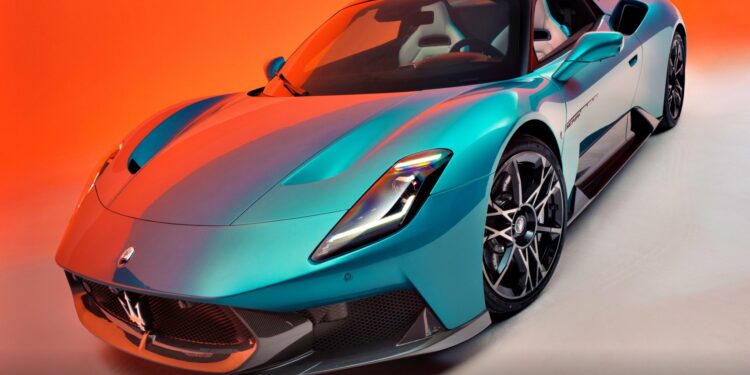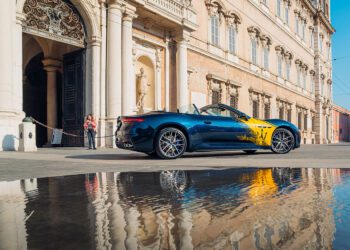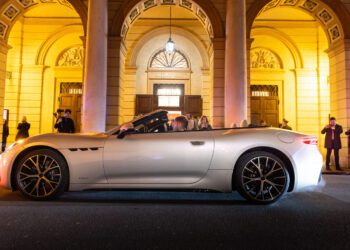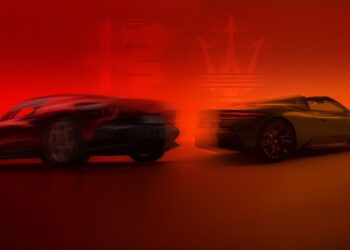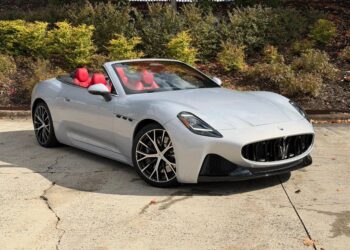Maserati has pulled the wraps off its latest flagship at the 2025 Goodwood Festival of Speed: this is the 2026 Maserati MCPURA. Hand-built in Modena, Italy, it represents the sharpest edge of the Trident marque’s performance ambitions yet.
The name MCPURA itself is a deliberate fusion of meaning: MC pays homage to the halo MC20, which itself is a nod to the Frank Stephenson-designed MC12, while PURA, which is Italian for “pure” reflects the car’s deeper focus on design, emotion, and performance. The company’s launch slogan, a playful spin on Einstein’s equation E = MCPURA, frames the car as a high-performance formula with a deeper focus on design, materials, and customization.
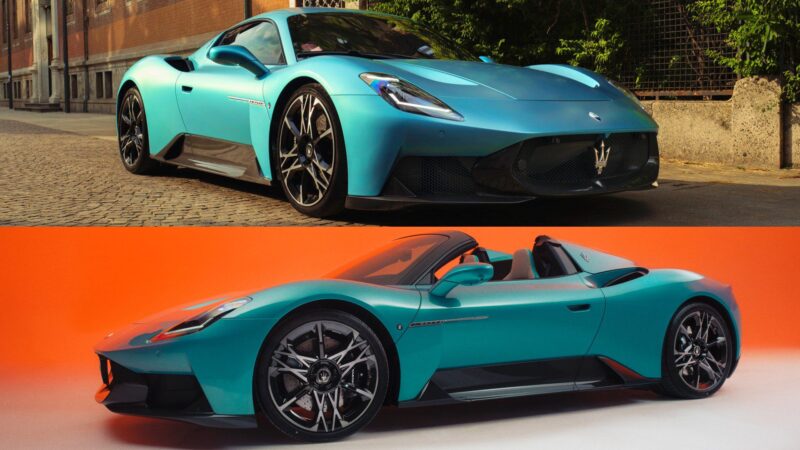
It arrives in two forms: the fixed-roof coupé and the Cielo convertible. Both are powered by the Maserati-developed 3.0-liter Nettuno V6, delivering 621 horsepower and 538 pound-feet of torque and a staggering 207 horsepower per liter. The engine delivers 532 pound-feet of torque from just 3,000 rpm and features a patented pre-chamber combustion system with dual spark plugs tech borrowed from Formula 1, a setup that’s earned Maserati several international patents. With its carbon-fiber monocoque, total weight stays under 3,307 pounds. That featherweight build enables an impressive power-to-weight ratio of 5.21 lbs/hp, making the MCPURA best-in-class in this crucial metric.
Maserati has chosen the annual Goodwood Festival of Speed to debut the MCPURA in a color that will certainly command attention: A striking shade dubbed Ai Aqua Rainbow. Designed through the brand’s in-house Fuoriserie customization program, this iridescent blue hue shifts in sunlight, mimicking the dispersive spectrum of a prism. Accents include magenta Trident badges with blue mica on the grille, C-pillar, and wheel centers, paired with burnished diamond-cut rims.
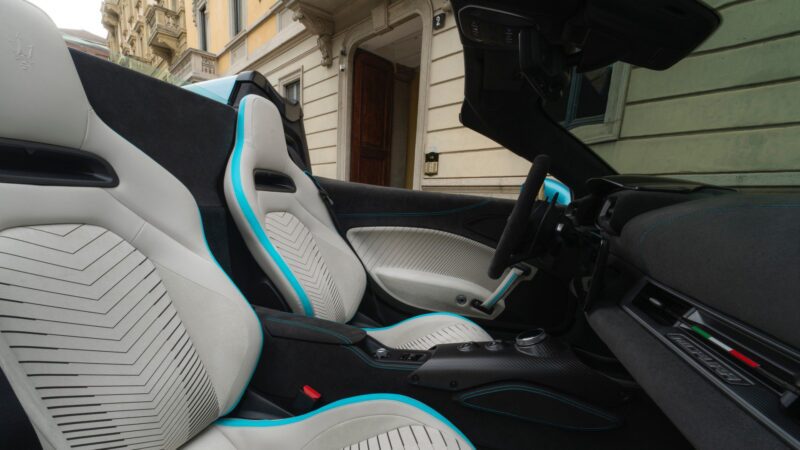
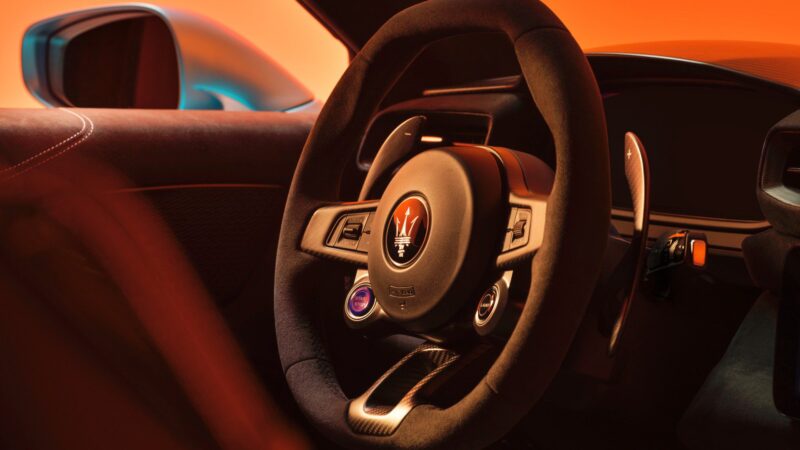
Inside, the cabin pushes boundaries with Ice-colored Alcantara seats, laser-etched with Trident patterns and backed in iridescent fabrics, with blue and blue with red, offering up a 3D visual effect. With a look that is sporty yet luxurious, it ties everything together with the exterior’s futuristic palette. Butterfly doors continue to add drama to the rear mid-engine sports car, while also showing off the visible carbon-fiber chassis. On the convertible Cielo model, Maserati has introduced a retractable polymer-dispersed liquid crystal (PDLC) glass roof that transitions from opaque to transparent in just one second, offering an immersive “sky feeling” or total enclosure at the push of a button.
Customization lies at the core of the MCPURA offering. Maserati’s Fuoriserie program further allows buyers to choose from over 30 paint finishes, ranging from solid to four-layer matte with new hues like Devil Orange, Verde Royale, and Night Interaction.

“With MCPURA, Maserati is once again regaining its rightful place: at the top and in its stomping ground. Both versions – coupé and Cielo – are created at our historic Modena facility, where the heart of the Trident has been beating for nearly 90 years. Modena is not just our headquarters; it forms part of our identity. We are the oldest automotive marque in the Motor Valley, an area we helped to build and continue to represent around the world. From there, we proudly tell the story of Italian excellence and luxury” – Santo Ficili, Maserati COO
The MCPURA slots into the space between track-bred weapons like the Huracán STO and tech-forward hybrids like the 296 GTB and Artura. It’ll appeal to buyers who value lightweight construction, F1-derived engine tech, and an Italian sense of style, all without the electrification trend many rivals are embracing.
The sports car will be built at the brand’s historic facility on Viale Ciro Menotti in Modena, where the Nettuno engine, GT2 Stradale, and the upcoming GranTurismo and GranCabrio are also produced. Pricing hasn’t been announced yet, but when new, the MC20 that launched back in 2020 had a starting MSRP of just over $200,000. As for production numbers, assuming MCPURA follows Maserati’s pattern for its halo models, production may be limited to somewhere between 800 and 1,200 units annually, shared across coupé and Cielo versions. That’s exclusive enough to maintain rarity, but likely aligned with facility capacity.
Source: Maserati


